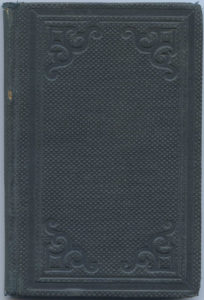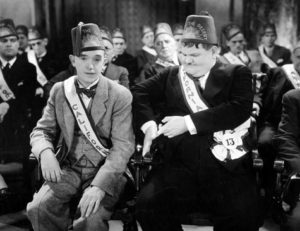A few weeks ago, an occasional email correspondent proposed in some depth that the Beale Ciphers were some kind of Masonic cipher, as Joe Nickell had famously claimed many years earlier.
One of the grounds my correspondent cited was that because Robert Morris’s (~1860) “Written Mnemonics” employed (what he, though not a cryptologist himself, thought was surely) a largely similar dictionary cipher, then it was surely no great stretch at all to see the Beale Ciphers also as a Masonic cipher, right?
I’d seen “Written Mnemonics” mentioned in a number of places (most notably in Klaus Schmeh’s online list of encrypted books), but had never seen it up close and personal, even though it was quite a well-known historical cryptogram. So I bought a copy to see it properly for myself. And, as Barry Norman was (and probably still occasionally is?) wont to say, why not?
Maybe one day I’ll also get round to buying myself a copy of the Oddfellows cryptogram booklet I cracked too. But my cipher book-buying account is none too flush right now, having just bought four Beale-related books this month. 🙂
Anyway, I posted a permanent webpage here for “Written Mnemonics” with some scans of its first few pages: but it seems highly unlikely to me that anyone would be able to crack it without the (separately published) cipher key document, of which I don’t currently have a copy. (Of course, if anyone happens to know how I can get a copy of that, please let me know!)
The historical background is that the book’s author, Robert Morris (no relation to the “Robert Morriss” mentioned in the Beale Papers, sorry if that’s inconvenient), produced these “Written Mnemonics” to try to preserve and distribute what he believed (from his own historical research) to be the oldest genuine forms of Masonic rites. Though this went against the letter of Masonic practice, he and a group of like-minded people known as the “Masonic Conservators” felt that the historical urge to conserve these rituals in written (albeit strongly enciphered) form outweighed the letter of the Law that said not to record them.
However, this was a controversial thing for him to do because when you signed up to be a Mason, you specifically swore never to write Masonic rituals down – they were necessarily supposed to be passed down orally, as part of an (allegedly) millennia-spanning tradition of passing secrets down orally (though whether this supposition is actually true or not is another matter entirely).
And so Morris’ publication in the 1860s of a 3000-copy print run of his “Written Mnemonics” book proved problematic for many Masons, particularly those of a more conservative disposition (of which there were more than a few). Unfortunately, there wasn’t really a middle ground to be had in the ensuing debate: and ultimately Morris came off the worse of most of the associated arguments, and so ended up being pushed to the movement’s periphery, if not the cold outside.
History hasn’t really remembered Morris well, but perhaps this is a little unfair: and this may also have been because Ray Vaughn Denslow’s (1931) book The Masonic Conservators covered the ground of what happened so well that there was little else of great interest for later historians to scratch through.
Might the Beale Ciphers be Masonic? Well, it’s entirely true that a fair few men of that era were Masons or Oddfellows or Sons of the Desert (or whatever), and so there was a reasonable statistical chance that the person who enciphered the Beale Ciphers was at least coincidentally a Mason: hence I can’t currently prove that the Beale Ciphers were not some kind of smartypants Masonic cipher of a previously unknown form.
But having gone over Denslow’s descriptions of Morris’s cipher key (which Denslow clearly had seen one or more copies of), I can say that there is clearly no connection whatsoever between the kind of code used by Morris and the kind of dictionary cipher used in B2, or indeed the (very probably) hybridized dictionary cipher used in B1 and B3.
So might the Beale Ciphers have anything at all to do with Morris’ “Written Mnemonics”? From what I can see so far, the answer is an emphatic no, sorry. As always, please feel free to point me towards other documents or evidence that suggests otherwise. 🙂


Oh dear, down in the dumps are we — Laurel and Hardy ?
I sympathize as long as you don’t bring Charlie Chaplin ‘into the picture, so to speak.
Mnemonics, however, are very useful when having to memorize items of interest.
An example of mixed up mnemonics was presented, by you, several weeks ago, in the ‘Rohonc’ puzzle.
Keepon keepingon !
😉
If Beale meant the secret of the treasure’s location to be understood by [fellow?] Masons, he could have just told them where it was, couldn’t he? No need to put anything in print.
Nick,
I’ll pull out the Mason’s certificate we have on file for my husband’s great grandfather. I’don’t remember any code being written. That particular lodge doesn’t appear to be still in existence. I vaguely remember that enrollment meant sponsorship by an already enrolled Mason. Whether they had ‘secret’ handshakes or ‘code’ mumbling, we may see. Cya later!
beady-eyed wonderer 😉
No written code, but the certificate is written in English and Latin (side by side). There is a gilded paper seal threaded onto a pale blue ribbon affixed to bottom left corner of the document.
There are symbols (beehive, a mallet, scythe…..) which apparently indicate the benign activities of the order.
Did you follow up on my lead (several months/year ago) to Robert Lomas (lecturer on Masonic history in lodges in West Yorkshire) ?
It is about the Quest,,,and a plan for there unexpectedly received legacies. There is masonic influence on site, but they suggest something much more was housed in the vault, more valuable than gold, even more secret than masons knowledge,,,,Legacies received, Legacies hidden, Legacies needing to found, strange cycle. Legacies that if forever lost would be a Catastrophe ..lol, goodluck fellow hunters ,,to help recall names that are cherish though partially forgotten..think food.